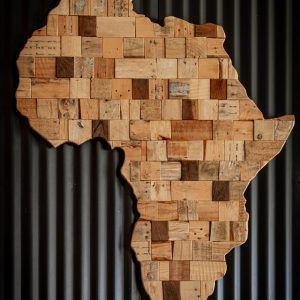[bctt tweet="For one reason or another, someone decided to lie to us by gross omission. And this was okay during colonization, but nearly 60 years afterwards, a revision of our histories is long overdue." username="QaziniKenya"]
I started searching for the “lost” East African history after realizing that all the sources available were too shallow. Especially when it comes to East African nations, we do seem to have a blind spot. For example, the official history of Kenya is a very blunt account of our past 120 or so years – the inauspicious colonial history.
However, we all know that our roots go deeper than that. For one reason or another, someone decided to lie to us by gross omission. And this was okay during colonization, but nearly 60 years afterwards, a revision of our histories is long overdue.
To fill this gap, I have perused through thousands of Wikipedia articles, books, and mythological stories over the past several years. I have also pored over hundreds of pictures of (mostly naked) “Africans” from different parts of the continent. I realized that they tell a whole other story altogether.
However, by far the most reliable sources I’ve found have been old maps. The first few are terribly clueless, about even the shape of Africa, but they get more accurate over time. Here is a breakdown of four of the best that I have found so far.
In the 1644 map of Africa, East Africa stands out for being dominated by the Empire of Abyssinia. And in 1644, Abyssinia was massive! The borders stretched all the way from the Red Sea in the north to the Mwene Mutapa kingdom in the south.
Abyssinia shared significant borders with the Kingdoms of Nubia in the northwest, Biafra from the west, and Congo to the southwest. With Mwene Mutapa in the south, the entire eastern border was covered by the “Swahili Coast”. It stretches from the general area of Mozambique in the south, covering a strip of about 100 kilometres inland all the way north to the strait of Djibouti.
Even though the interior regions are rather mysterious, there can be no doubt that Abyssinia was a major East African power. It spread its influence over the Great Lakes region, the Kirinyaga highlands, and the northern Ethiopian Highlands.
In this time, Ethiopia is just a region in Abyssinia along the equator. The explorers who made the maps state that little is known about it. But it is still very interesting that the Atlantic Ocean is labelled as “Aethiopian Ocean”.
Every historian I know today assumes that Abyssinia is just another name for Ethiopia. I’ve seen many books using the two names interchangeably. However, based on the evidence emerging here, this is patently wrong. These two very distinct powers are actually detrimental to each other.
You see, from controlling the entire East African territory in the 17th century, Abyssinia had shrunk dramatically by the start of the 18th. And Ethiopia, which was just a region in the kingdom in 1644, now occupies most of the former Abyssinian territory.
Abyssinia has been pushed north and now occupies only the Red Sea lands. But even there, they have conceded a portion of precious beach territory to the Ottoman Abex. Abyssinia is in decline, and a newly minted Ethiopia is on a roll!
The Ethiopians push Nubia’s borders slightly upwards taking the boundaries to the Sahara desert in the north. In the south, new Ethiopia covers the entire Great Lakes region. To the west, Ethiopia abuts the Atlantic Ocean – now labelled the “Ethiopian Sea”.
All across the southern borders are newly splintered kingdoms. They include; Loango, Congo, Angola, (from the former Congo Empire) Mwana Matamana and Mwana Emugi (from the Mwana Mutapa Empire).
To the East, the “Swahili Coast” has splintered into Zanzibari in the south and the Anian kingdom in The Horn. This eastern border moves closer to the Indian Ocean, and Ethiopia is firmly entrenched in the central regions of Africa.
A short 27 years after the 1710 boundary marks, Ethiopia continues to expand. Not only does it now cover all of Central Africa, but it also controls the lion’s share of the vast Sahara desert in the north. To the northwest, Ethiopian lands touch the West African coast.
And as unbelievable as it might seem today, Ethiopia covers more than 50% of Africa in 1737. To manage this vast territory better, Ethiopia is divided into “Ethiopia Minor”, and “Ethiopia Major”, with the latter remaining firmly entrenched in East Africa.
The Coast of Guinea is lost to a resurgent Congo, and the “Swahili Coast” territories are pushed further towards the sea. In the northeast, Nubia and Abyssinia are also pushed further east, so that Ethiopia now shares a border with Egypt.
Ethiopia goes down the same way it expanded – snap quick. Less than a century after the 18th-century zenith, Ethiopia is in serious decline. The kingdom has shrunk to a mere fraction of its previous extent, with a territory that barely covers all of Central Africa.
The northern territories are overrun by a new player in the field known as “Great Soudan”, and Guinea/Biafra pushes in from the West. In the southwest, the Mono Motapa has reclaimed long-lost territories, carving a wedge out of Ethiopia.
From the east, a resurgent Abyssinia encroaches. Having subsumed the “Swahili Coast”, the kingdom of Abyssinia now controls the entire eastern African coast. Nubia is now mostly a coastal kingdom, with a new interloper separating it from Ethiopia.
The modern map paints a different picture of Africa. There are now 55 countries that mostly coexist in peace. But it is always nice to look back at a time when things were different. At the very least, it reminds us that nothing, not even national boundaries, is ever permanent.
Also read: Africa Must Own Her History – but First We Need to Know It





